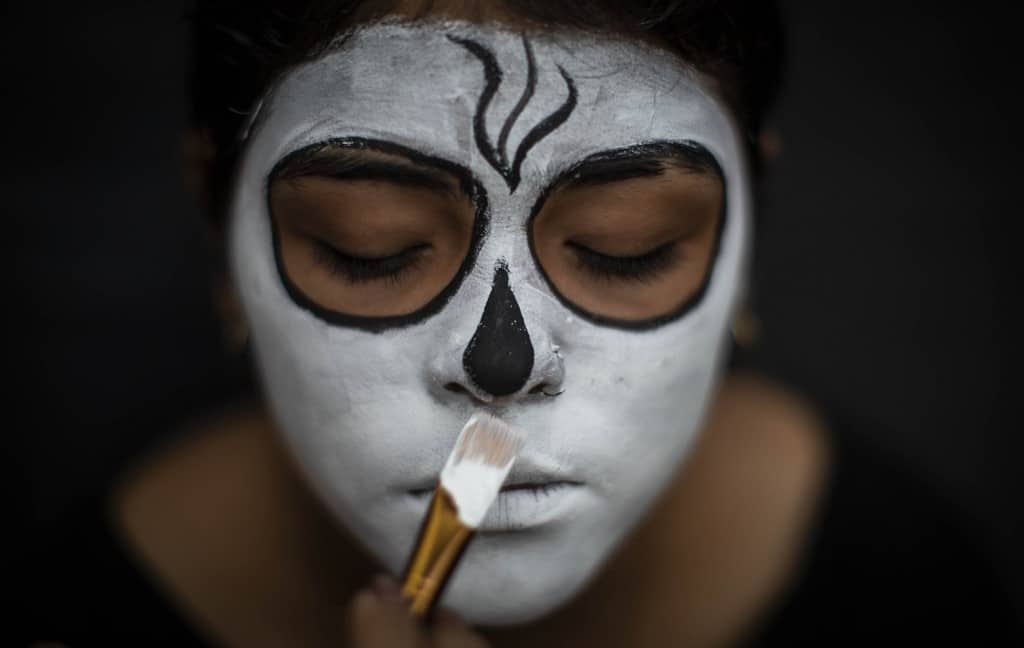Disguised as devils, witches, goblins and terrifying characters from indigenous mythology, thousands of Nicaraguans celebrated with joy and boisterous dances the festival of Los Agüizotes, a tradition of the southern city of Masaya that the locals consider better than Halloween.
Some danced with euphoria around a buzzard — a bird locals link to evil spirits — that they dragged along the ground with a rope tied to its neck while at the same time trying to set it on fire as they screamed in the night.
Others danced to the sound of the philharmonic bands or paraded with their horror costumes through the streets of the city located 30 km south of Managua, while others observed from their homes the hubbub of this tradition that is celebrated on the last Friday of the month of October.
“It’s happy to participate,” Mayeli Castillo, a 14-year-old girl who disguised herself as a “punk witch” and danced non-stop in the middle of the crowd, told AFP.
“I like to be cuernudo (a man who has an unfaithful wife),” joked José Castro, hiding behind a mask of a devil with four horns.
The tradition, which is celebrated days before the Halloween party, this year attracted more Nicaraguans than before despite the Covid-19 pandemic.
“I’m not afraid of that anymore” because “the Covid has already gotten me,” the nurse Harling Guevara, 31, told AFP, who said that he painted his face as a “terrifying skull shedding tears of blood” to express his feelings of “loneliness, anxiety and depression.”
“You should not be afraid of Covid-19,” supported Jesús Peréz, a young man dressed in a devil costume
The festival of Los Agüizotes, which in the Nahuatl language means horror, revives characters from indigenous mythology such as the Mocuana, the daughter of a cacique who went crazy when she learned that her lover, a Spanish conqueror, had stolen her mother’s fortune.
Among other characters, it also revives la Cegua, a beautiful woman who became a beast after being cursed for disrespecting her parents.
The Masayas, known as a town of rebellious artisans, make their own masks in family workshops, like Lesther Espinoza, 38, who inherited the business from his father.
“This workshop has been making masks” of indigenous mythology for more than 30 years, such as “La Cegua, el Cadejo, la Mocuana, la Llorona and many scares that our grandparents told us,” he told AFP.
For the masayas, this party is better than Hallowen because it captures popular culture.
“Halloween must be beautiful, but I’ll take ours: Los agüizotes,” Espinoza said.







